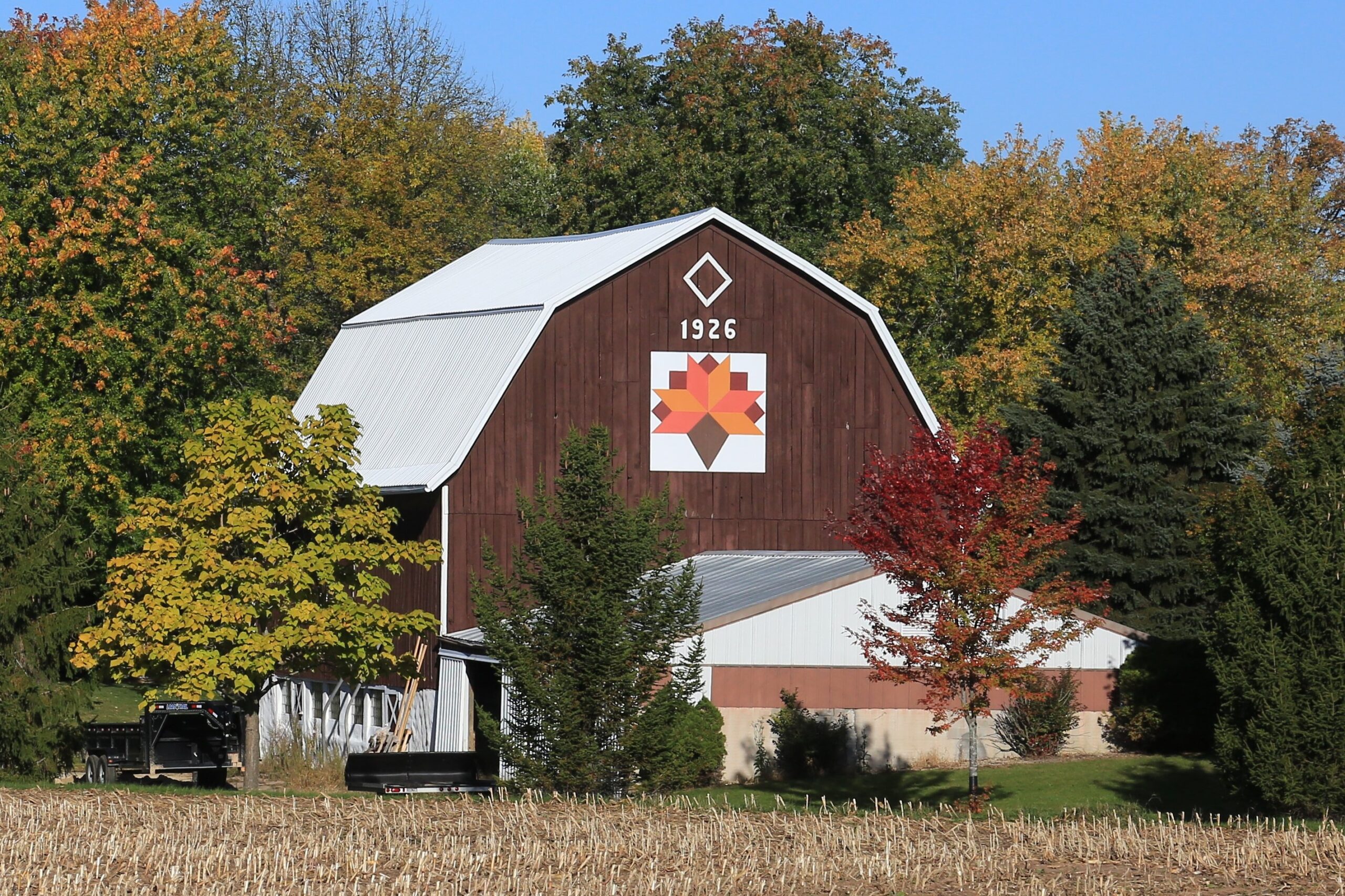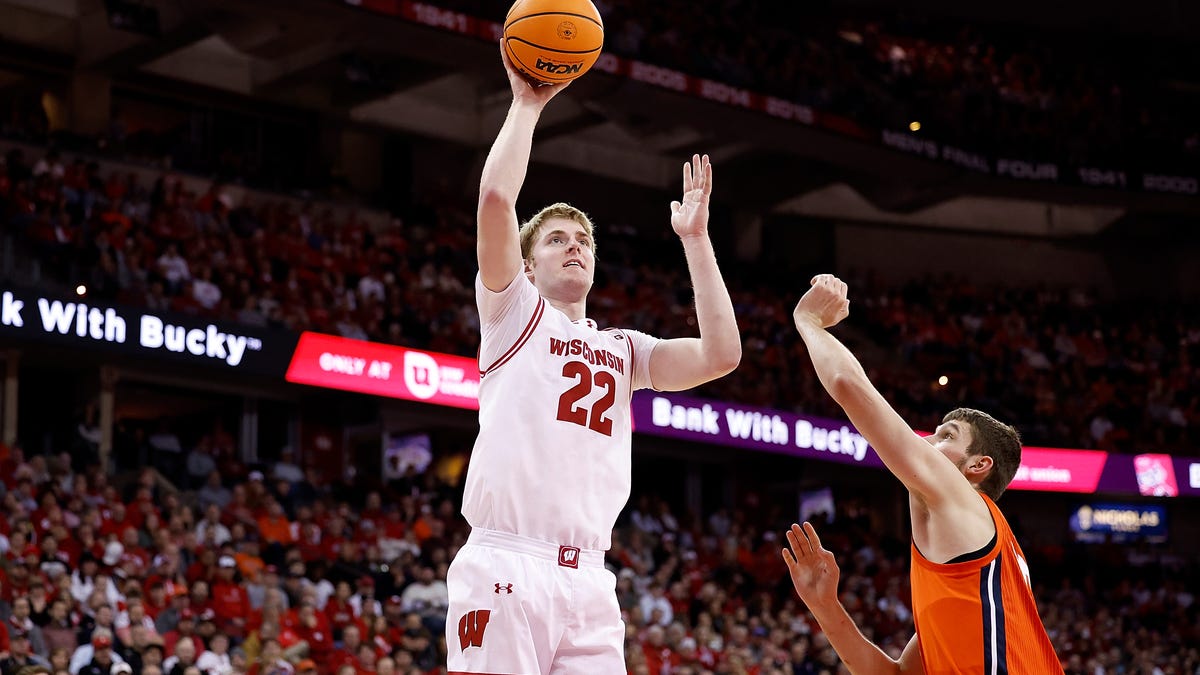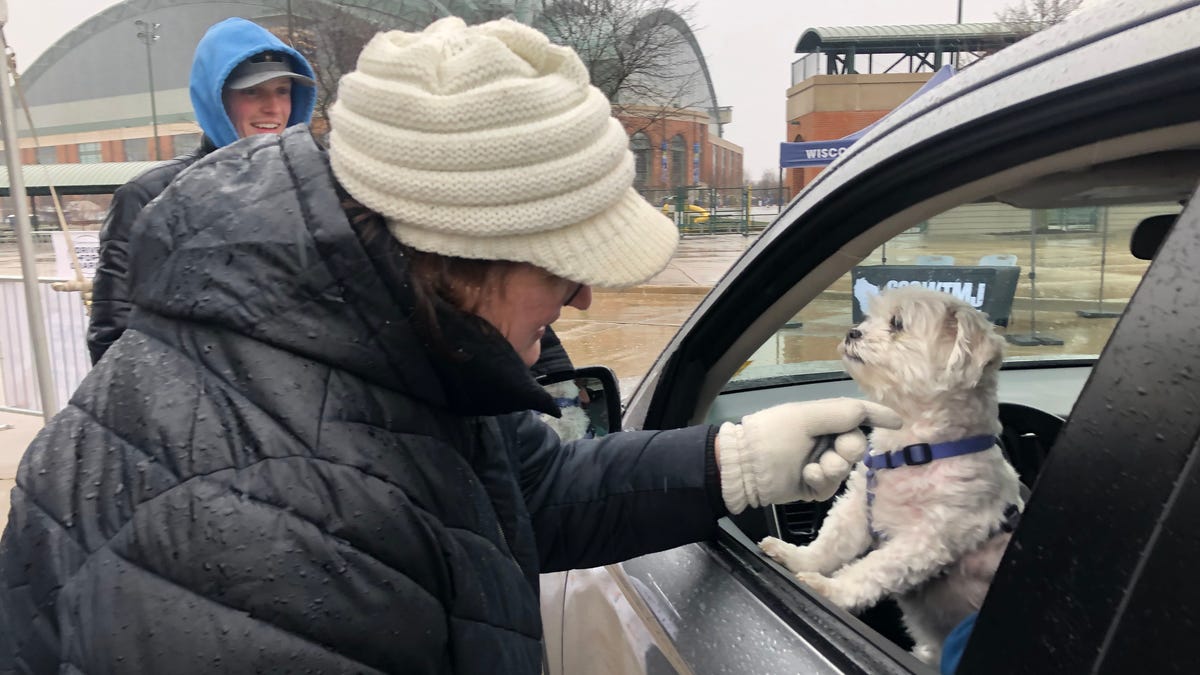Wisconsin
Wisconsin family farms increasingly relying on off-farm employment to supplement income

The economic relationship between Wisconsin family farms and the rural communities that surround them is changing.
UW-Madison agricultural and applied economics professor Steve Deller said that smaller farms are struggling to generate enough income to support themselves, so families are more often turning to off-farm employment to help pay the bills.
Deller said this represents a reversal from the historical dynamic of the farm, where the agricultural operations were supporting the rural communities around them.
Stay informed on the latest news
Sign up for WPR’s email newsletter.
He joined WPR’s “Wisconsin Today” to share his latest research on the decline of family farms in the state and how nearby towns and villages support them.
The following was edited for clarity and brevity.
Kate Archer Kent: What kind of declines are you seeing in Wisconsin farms?
Steve Deller: We’re seeing, basically, consolidation. Farms are getting bigger. It’s economies of scale. There was a period in the 1980s and 1990s where it kind of stabilized a little bit, but we’re seeing that pattern of further consolidation returning.
What they’re doing is, they’re selling the herds off to other, larger farms, furthering the consolidation. So the number of milking cows is actually relatively stable. It goes up and down a little bit, but what we’re seeing is that more and more of that herd is being concentrated in fewer, larger farms.
KAK: How is this affecting jobs and the need for off-farm employment to support farms?
SD: The traditional thought is that, for a healthy rural economy, you have to have healthy agriculture. The flow of economic benefits goes from the farm to the rural communities. But when you start to look at the financing of the farm family or the farm household, the data is really suggesting something very, very different.
Historically, someone would get a job off-farm primarily to get health insurance. Increasingly, that off-farm income is keeping the farm afloat. It’s keeping the family afloat, and because the family is now financially stable, because of that off-farm income, the farm is able to continue to operate.
KAK: Are there enough reliable off-farm jobs available in surrounding rural communities?
SD: If you start to look at a reasonable commuting distance, it really kind of opens up a lot of opportunities. And when you get into many of these rural communities, there’s still labor shortages. We’ve been generating more jobs than we have people for years. So the opportunity for off-farm employment is actually pretty good, particularly if you’re willing to drive a little bit.
KAK: How should this trend influence public policy for these rural communities?
SD: I think the takeaway from this research is that we have to think about the relationship between the farm and rural communities differently.
The policy implication is that, if you want to maintain a farming economy — maintain those family farms, those medium sized, intermediate sized farms — you have to make sure that there’s good-paying, off-farm employment that has good benefits.
So the idea is that now we have to look at this more holistically, and we have to look at how farming and the local business community work together more.
KAK: What do we lose when we lose the small family farm?
SD: I think it’s part of our culture. I think it’s part of the way that we view ourselves. From a purely economic perspective — if I put my cold-hearted economist hat on — these really small farms don’t impact the local economy that much. But it’s a cultural dimension. It’s part of who we are. There’s pride in it. It’s part of our identity.
Also, if you look at things like farmers markets, a lot of the local foods are from these smaller farms. So if we want to maintain local food systems, in order for those farms to maintain, there has to be off-farm income.

Wisconsin
Former Wisconsin basketball center adds to his list of NBA workouts

Former Wisconsin Badgers center Steven Crowl is compiling a long list of NBA workouts.
Crowl, whose Badgers tenure concluded with an NCAA Tournament Round of 32 loss to BYU in late March, has reportedly worked out with the Golden State Warriors, New Orleans Pelicans, Charlotte Hornets and Denver Nuggets over the past few weeks.
The 7-foot center’s most recent workout came with the Pelicans on Thursday, per The Athletic’s Will Guillory. Crowl worked out alongside North Carolina’s R.J. Davis, Arkansas’ Johnell Davis and Kansas’ Hunter Dickinson.
Earlier this week, the Hornets worked out former Badger Chucky Hepburn alongside Crowl, per Hornets beat writer Rod Boone. The two spent three seasons in Madison together from 2021-24.
Crowl isn’t the only former Badger to dip his toes into NBA waters this offseason. Star guard John Blackwell worked out with the Chicago Bulls, Milwaukee Bucks, Portland Trailblazers and Philadelphia 76ers before withdrawing from the 2025 NBA draft in late May.
The Minnesota native started 141 of his 153 career appearances in five seasons from 2020-25. In those contests, the veteran averaged 9.7 points, 5.6 rebounds and two assists off a 52.5% shooting rate from the field, 36.3% mark from 3 and 82% clip from the charity stripe.
During Wisconsin’s 27-10 output this past season, Crowl started all 37 games and logged per-game averages of 9.9 points, 5.3 rebounds and 2.4 assists. He did so while shooting 54% from the field, a strong 41% from 3 and 82% from the free-throw line.
At his size, Crowl’s shooting ability is an unquestionable commodity in the NBA. Given modern spacing and skill at the center position, the former Badger’s progression as a shooter, especially from the top of the key, headlines his potential professional portfolio.
Nonetheless, Crowl’s odds of being picked in the 2025 NBA draft or signing with an NBA franchise are slim. The workouts will expose him to some NBA personnel, but his most likely route revolves around a career oversees.
Contact/Follow @TheBadgersWire on X (formerly Twitter) and like our page on Facebook to follow ongoing coverage of Wisconsin Badgers news, notes and opinion
Wisconsin
Wisconsin Medicaid director: New federal requirements would affect ‘the whole health care economy’

Wisconsin’s Medicaid director says new work requirements in the federal budget bill House Republicans passed last month could extend beyond those who use the Medicaid or FoodShare programs.
In Wisconsin, almost 1.3 million children and adults are enrolled in Medicaid, and more than 700,000 receive FoodShare. The new legislation expands work requirements for both programs.
As it relates to Medicaid, the new rules would affect about 194,000 Wisconsin adults between the ages of 19 and 64 who do not have dependent children at home and have an income at or below 100 percent the federal poverty level.
Stay connected to Wisconsin news — your way
Get trustworthy reporting and unique local stories from WPR delivered directly to your inbox.
“The bill creates new work requirements for this population,” Wisconsin Medicaid Director Bill Hanna told WPR’s “Wisconsin Today.” “We estimate that about 63,000 of those currently enrolled are not meeting those requirements today.”
Under those requirements, individuals would need to meet 80 hours of qualifying activities — like working, volunteering or education — per month. The bill would also require individuals to renew their eligibility with documentation every six months, versus the current 12-month requirement.
Work requirements already exist for adults aged 19 to 54 without dependent children under Wisconsin’s Supplemental Nutrition Assistance Program, called FoodShare. But those would expand under the bill to include people up to age 65 and adults who have children over the age of 6.
“We anticipate that an additional 88,000 people in Wisconsin will now need to submit additional paperwork to the state in order to prove that they are meeting those work requirements,” Hanna said.
Hanna told “Wisconsin Today” about the potential effects of the bill on Medicaid and FoodShare in Wisconsin.
This interview has been edited for length and clarity.
Rob Ferrett: Could this legislation potentially cause people to be kicked off of Medicaid who shouldn’t be?
Bill Hanna: Yeah, I think there’s a lot of unintended consequences. … Between the ages of 19 and 54, approximately 70 percent of those folks are working, when you look at national data. It’s when you get into that older range, between 55 and 64, that that number goes down. I think what you’ll see is a bigger impact on that older population, primarily women.
I think the other point is this will certainly increase the uninsured rate in Wisconsin. And what we know is that individuals, if they lose their Medicaid, it doesn’t mean they don’t need health care. It just means they don’t have a way to pay for it now, which will increase uncompensated care for hospitals, doctors and other health care providers.
Income is important to hospitals, especially as we’ve seen closures in western Wisconsin, and uncompensated care really impacts all of us. We’re all health care consumers, and when hospitals don’t have enough revenue to stay open, they have to pass those costs on to other health care consumers. So while this may appear to just be impacting those 63,000 individuals that we’re talking about, this really has an impact across the whole health care economy.
RF: When I talked to Wisconsin Sen. Ron Johnson, he said states have expanded Medicaid to cover those it’s not meant for — that they’re abusing the system. What do you think of that?
BH: States are certainly not gaming the system. Everything that states are doing is currently allowable under federal law, and in Wisconsin, we’re really in a different boat than much of the country. Wisconsin has done its own partial expansion, so we’re not getting the 90-10 match like many states are. For our expansion population, the state is putting up 40 percent of that cost. We are also incredibly judicious with how we use provider taxes, always with an end goal of making sure hospitals stay open and stay viable and continue to serve Medicaid individuals.
On qualified individuals or ineligible folks: That’s just not true. Wisconsin and all states go through a review by the federal government every three years determining whether states are making errors or allowing folks on the program that shouldn’t be on the program. Wisconsin’s most recent review was in 2022, and we had a 99.5 percent accuracy rate. And when you talk about what’s inaccurate, it’s really about dotting i’s and crossing t’s, not that folks are ineligible. So the facts aren’t there. We run a really good program in Wisconsin, and these cuts will hurt not only the individuals that we talked about, but again, our health care economy.
RF: What does this mean for the workload at the state with that additional documentation, both for SNAP and for Medicaid?
BH: It’s additional workload. The bill also shifts other costs from the federal government to states. Today, FoodShare is matched 50-50 in terms of how we administer the program. The bill changes that to where the states now need to pay 75 percent of the cost to run the FoodShare program. Also, right now, the SNAP benefits that go out to individuals are paid 100 percent by the federal government. The bill adds, for the first time, a matching requirement for states at least 5 percent, which is $69 million per year in Wisconsin. And it goes up to as high as 25 percent depending on a state’s error rate.
So between the workload and system changes we have to make in order to collect all the documentation, the cost shifting and administrative costs and the new matching requirement for FoodShare benefits, we estimate it’ll cost Wisconsin about $119 million [extra] in the first year alone, just to maintain the program that we have today.
Wisconsin
At ‘crisis level’ capacity, Wisconsin Humane Society drops dog adoption fees temporarily

Wisconsin Humane Society staff releases a snowy owl into the wild
A snowy owl found covered in oil in December in Milwaukee was successfully rehabilitated by wildlife staff at the Wisconsin Humane Society and released to the wild.
Wisconsin Humane Society
- The shelter is at crisis capacity due to a new walk-in surrender policy implemented June 1, leading to a significant increase in animals.
- The policy change aims to support families struggling with systemic issues like affordable housing, rising pet costs, and vet shortages.
- The Humane Society encourages fostering to create space and offers a “no time limit” promise for animals awaiting adoption.
Saying it’s at a “crisis level,” the Wisconsin Humane Society has temporarily lowered its adoption fees for dogs.
The fees, which typically range from $199 to $299, have been reduced to $75 through June 11. The fee for “benchwarmer” dogs, which have been at the Humane Society at least seven days, has been reduced to $25.
In a June 4 social media post, the Humane Society said, “The Wisconsin Humane Society is at crisis level, and we are in desperate need of dog adopters and canine foster parents. We have nearly 400 dogs in care across our organization and are drastically reducing adoption fees in hopes of finding as many great matches as possible.”
The shelter is at crisis capacity because of a policy that started June 1.
“We moved to a walk-in surrender model,” said Angela Speed, the Wisconsin Humane Society’s vice president of marketing & communications. “We used to require appointments, but we recognize that appointments for people needing to surrender their pets were booking months out.”
The policy also was implemented to support families in light of systemic issues that make pet ownership difficult, Speed said, including the lack of affordable housing that allows large dogs, rising costs of pet ownership and a national shortage of veterinarians.
As a result of the new policy, it’s caring for just under 400 dogs — about 100 more than in June 2024.
The Humane Society’s Milwaukee campus has started moving dogs to its other five Wisconsin locations but is quickly running out of space.
In addition to lowering the adoption fees, the Humane Society is encouraging people to foster dogs.
“We really use our foster network, when our shelters are full, to create more space for incoming animals in the shelter,” Speed said.
Dogs are fostered for a few reasons, she said. Some dogs need a shelter break for a day, while others need to be fostered for several weeks due to medical conditions or behavior observation.
Fostering is something that doesn’t require a lot of space, and Speed said there’s no such thing as a perfect foster home. There are people who foster while living in smaller apartments or with other animals in their house.
“There’s a type of animal for just about every situation, and of course, you get first dibs if you fall in love,” she said.
The promotion is meant to address the shelter’s current capacity, but Speed said there’s an option that will never be on the table.
“The Wisconsin animals in our adoption program have as long as it takes to find a new home,” Speed said. “We never euthanize for space or time, and that’s a promise we’ve kept for 26 years.”
-

 News1 week ago
News1 week agoVideo: Faizan Zaki Wins Spelling Bee
-

 News1 week ago
News1 week agoVideo: Harvard Commencement Speaker Congratulates and Thanks Graduates
-

 Politics1 week ago
Politics1 week agoMichelle Obama facing backlash over claim about women's reproductive health
-

 Technology1 week ago
Technology1 week agoAI could consume more power than Bitcoin by the end of 2025
-

 News1 week ago
News1 week agoPresident Trump pardons rapper NBA YoungBoy in flurry of clemency actions
-

 Technology1 week ago
Technology1 week agoSEC drops Binance lawsuit in yet another gift to crypto
-

 Technology1 week ago
Technology1 week agoOpenAI wants ChatGPT to be a ‘super assistant’ for every part of your life
-

 World1 week ago
World1 week agoTwo killed in Russian attacks on Ukraine before possible talks in Turkiye















